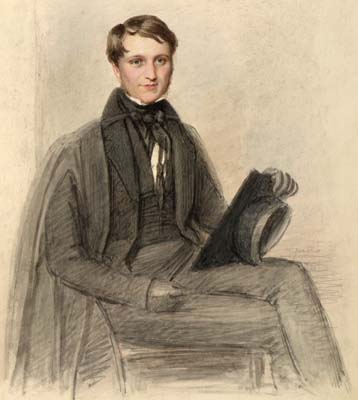


 تاريخ الرياضيات
تاريخ الرياضيات
 الرياضيات في الحضارات المختلفة
الرياضيات في الحضارات المختلفة 
 الرياضيات المتقطعة
الرياضيات المتقطعة
 الجبر
الجبر
 الهندسة
الهندسة 
 المعادلات التفاضلية و التكاملية
المعادلات التفاضلية و التكاملية 
 التحليل
التحليل
 علماء الرياضيات
علماء الرياضيات |
Read More
Date: 5-11-2016
Date: 26-10-2016
Date: 3-11-2016
|
Died: 7 May 1879 in Bridge of Allen, Stirlingshire, Scotland

Philip Kelland was the son of the Rev. Phillip Kelland (died 1847), curate of Dunster, Somerset and then rector of Landcross, Devon. He studied at Queens' College, Cambridge and was coached privately by William Hopkins, graduating in 1834 as senior wrangler and first Smith's prizeman. Kelland was ordained in the Church of England and was a fellow of Queens' College during 1834-38. In 1838 he was appointed Professor of Mathematics at Edinburgh University in succession to William Wallace. He was the first English-born and wholly English-educated holder of that chair: the unsuccessful applicants included the Scots Duncan F Gregory, Edward Sang and John Scott Russell.
In Edinburgh, Kelland joined with James D Forbes, the Professor of Natural Philosophy, in supporting reforms of the Scottish university system. According to A. Grant, he came to know the Scottish Universities better even than do Scotsmen themselves. He was an effective reformer who won the respect of his colleagues, and a successful and popular teacher who gained the affection of his students. One of his students, the writer Robert Louis Stevenson, wrote kindly that:
... for all his silver hair and worn face, he was not truly old; and he had too much of the unrest and petulant fire of youth, and too much invincible innocence of mind, to play the veteran well ... as I still fancy I behold him frisking actively about the platform, pointer in hand, that which I seem to see most clearly is the way his glasses glittered with affection.
For many years, Kelland served as secretary of the Senatus of Edinburgh University. He was elected FRS in 1838 and FRSE in 1839. He was President of the Royal Society of Edinburgh during 1878-79, dying in office. He was also active in the Edinburgh Society of Arts, a member of the Board of Visitors of the Edinburgh Observatory, an examiner for several of Edinburgh's schools and colleges, and a founder and actuHelvetica adviser of the Life Association of Scotland. For the last-mentioned, he toured Canada and the U.S.A., and published an account of his travels entitled Transatlantic Sketches. In addition to his university duties, he gave mathematical lectures to the Edinburgh Ladies' Educational Association, and he took Sunday services in some of Edinburgh's Episcopal churches. (One obituarist records that Preaching, however, was ... one of the few accomplishments in which he did not excel.) He was twice married, first to a Miss Pilkington of Dublin, and then to a Miss Boswell of Wardie. He was survived by his widow, three sons and two daughters.
His early research work, undertaken at Cambridge, was influenced by Fourier and Cauchy. This is described in his Theory of Heat (1837, 1842) and in some papers; but this work turned out to be based on unsound principles. In all, 28 papers are listed in the Royal Society Catalogue of Scientific Papers: these are mainly on heat, light and water waves. His theoretical work on water waves (1840, 1844), published in Trans. Roy. Soc. Edin., attempted to explain aspects of the important experiments of John Scott Russell, then being carried out near Edinburgh. This work, though flawed in some respects, anticipated some of the results later obtained more convincingly by George Gabriel Stokes. He wrote analytical papers on General Differentiation (1839), and Differential Equations (1853), and gave a geometrical Theory of Parallels outlining a version of non-Euclidean geometry. Kelland produced a much-revised edition of John Playfair'sElements of Geometry and a successful textbook of Algebra. He wrote on the reform of the Scottish Universities, and edited the collected works of Thomas Young. Late in life, he collaborated with Peter Guthrie Tait on an Introduction to Quaternions.
Though not a research mathematician of the highest rank, Kelland had a great influence on the development of education in Scotland, and he attained a high standard of mathematical instruction.
Books:
Articles:



|
|
|
|
التوتر والسرطان.. علماء يحذرون من "صلة خطيرة"
|
|
|
|
|
|
|
مرآة السيارة: مدى دقة عكسها للصورة الصحيحة
|
|
|
|
|
|
|
نحو شراكة وطنية متكاملة.. الأمين العام للعتبة الحسينية يبحث مع وكيل وزارة الخارجية آفاق التعاون المؤسسي
|
|
|